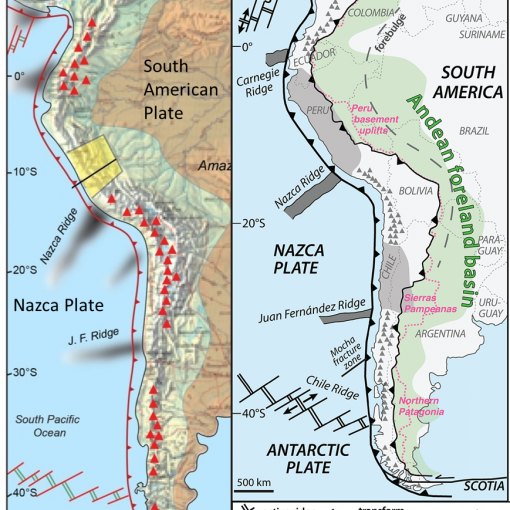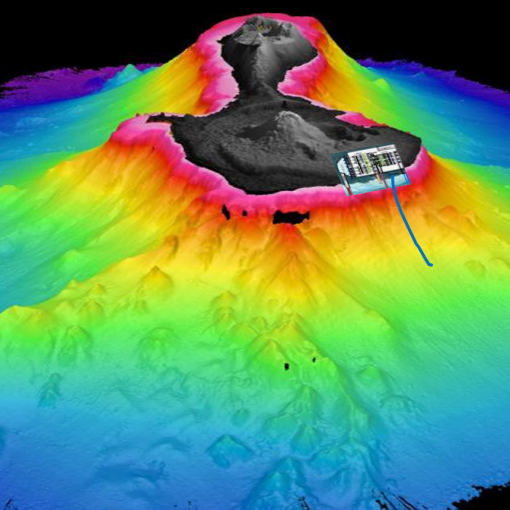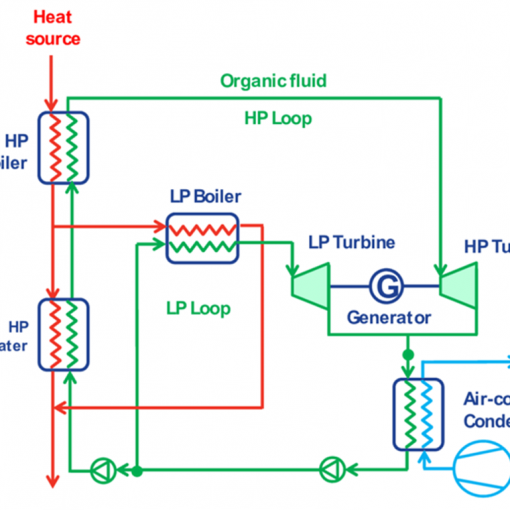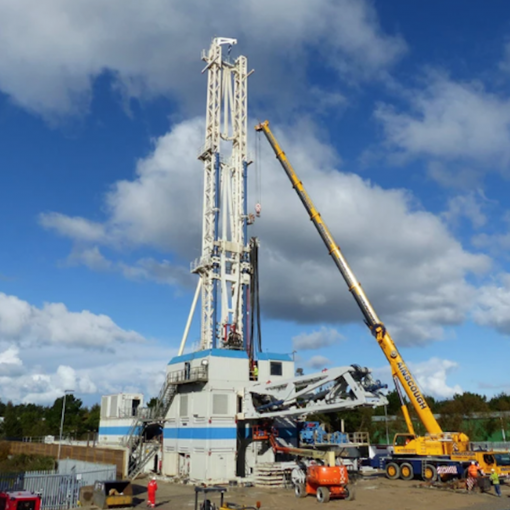The Energy Sector is changing – projecting tremendously increasing electricity demand (both in access and as a substitute for other forms of energy consumption) along with major trends called the “three D’s”: Decarbonisation, Decentralisation, and Digitalisation. All three of these D’s are associated with Microgrids. Microgrids are an attractive option for remote locations including communities as well as industrial facilities. Grid connections may be unavailable, unreliable, or uneconomic. One of the attractions is the ability to incorporate Renewables into the electricity power generation solution. Microgrids could utilise any of the typical components shown below:

There is extensive literature on this topic and numerous microgrids have been installed all over the world ranging in size from a single building to an entire city. For the Developing world in Africa, they are a particularly attractive option to support economic development of businesses initially and then to expand to support communities. Major grids will take time and capital to expand to reach remote areas, but resource extraction, markets, labour and populations are not necessarily always adjacent to established national power generation centres.
Various African microgrids are currently in use and some small community examples include those shown below:

Industrial microgrid applications have also been made in Africa (primarily with Solar PV panels on roofs):

The largest solar microgrid in Africa is reported to be in Nigeria at Bayero University Kano (BUK). The 7.1MW capacity project includes 3.5MWp of Solar PV (10,680# panels), 8.1MWh of Battery Energy Storage, and 2.4MW of backup Diesel Generators are supplying more than 55,000 students, 3,000 staff and nearly 3,000 streetlights at BUK.[1]

All the components of a microgrid are well proven technologies. One of the technical challenges is the control system which relies on data from various distributed sensors to facilitate the ability to ensure microgrid reliability and stability in varying environmental and electricity use conditions.
Wired and wireless IoT sensors are located across the system from power generation to energy storage to delivery systems to end users to capture the following data streams:
Power Generation:
- Conventional multi-fuel engine or turbine power generation – fuel data (incl. HFO, diesel, gas, LPG, biogas), pressures, temperatures, speeds, vibrations, and performance data including electrical output characteristics;
- Hydropower (e.g. dams) – water levels, generator equipment data, watershed weather data, and performance data including electrical output characteristics;
- Solar PV Farms – Photovoltaic (PV) panels, Power Meters, DC/AC Inverters, electrical systems, Solar Radiation measurements, weather data (cloud cover and precipitation), tracking systems, and performance data including electrical output characteristics;
- Wind Turbine Farms –Nacelle systems (generator and controls), Rotor / Hub / Blade integrity, adaptive control systems (pitch, yaw, and torque), wind speed and directionality, and performance data including electrical output characteristics;
- Hydrogen Production and Fuel Cells – Electrolyser, water systems, storage systems (i.e. compressor/pressurised tank or metal hydrides), and performance data including electrical output characteristics;
Energy Storage:
- Battery Energy Storage System (BESS) – different types of batteries including Lead-Acid (e.g. Absorbent Glass Mat (AGM) deep cycle batteries), Lithium Ion, or Flow; and new applications like second life EV batteries (used EV batteries < 80% capacity, no longer suited for vehicles);
- Energy Storage System (ESS) – one type is the use of produced and stored hydrogen (i.e. pressurised hydrogen (~700-1,000 bars) or hydrogen stored in metal hydrides (~10-40 bar));
Delivery Systems (safety integrity and performance):
- Transformers; Circuit Breakers; Switchgear;
- Transmission lines;
- Substations; Transformers; Distribution Bus;
- Distribution lines;
End users (Customers):
- Meters:
- Smart Meters (AMI communications and usage);
- Pre- or Post-paid Meters (usage)
- Load demand (timing of demand);
- Safety / security (i.e. authorised connection, payment status, electrical integrity at user location);
Advanced Metering Infrastructure (AMI) can help support increased investment and help minimise non-technical losses[2]. AMI projects are in progress in Angola, Côte d’Ivoire, Ethiopia, Ghana, Kenya, Nigeria and South Africa. These projects are in partnership with governments and utilities, but they can be used in microgrids also, particularly where a large business microgrid is expanded to support adjacent community small business and home users. Examples include: (1) 20,000 smart electric meters in Mali to reduce losses by 20%; (2) 30,000 points in Burundi to reduce energy losses by 22%; and (3) 40,000 low voltage users in Benin to reduce losses by 5-10%. WI-SUN standard RF-MESH radio frequency communications technology is used for smart meter data telemetry between the utilities and the smart meters. This technology with a range of ~4 km can be implemented with extremely low levels of power consumption as compared to other wireless communications such as WLAN.

Smart Meters may also facilitate better access to clean water by using the same communications devices and channels for water supply and metering. Leak detection is a major issue for eliminating non-revenue water leakages. Non-revenue water in South Africa has been estimated to be as high as 37% which contributes to severe water shortages and financial issues for water companies.[3] Ghana Water Company is using 40,000 intelligent water meters to improve water usage.[4] Two important services can share the communications technologies.
All this sensor data is collected, Edge processed where applicable (to minimise communications bandwidth requirements), and transmitted to local and remote central control centres. Operations and maintenance personnel need this data to identify whether control systems were safely working, to know the integrity status of all equipment and systems, and to ensure electricity is reliably and economically being produced and distributed. It has been estimated that only about 50-80% of remote operational data flows through SCADA and DCS systems.[5] Non-control data may exist in Remote Terminal Units (RTU’s) and unit / station PLC controllers. A lot of data is unstructured (and even analogue) and may never leave the equipment itself (stranded Edge data). This data may be very useful for visualisation and may not even be routinely used yet for Edge analytics. Wireless Edge devices may be used to capture this data, perform analytics where applicable, and transmit certain data onwards to centralised servers and/or Cloud data platforms.
Microgrid controllers use high-speed data from connected energy assets to simultaneously optimize Renewable energy output and power quality. Lower operating costs are expected, as Renewable power and Energy Storage displaces conventional fuelled engine / turbine power generation, and there would be smaller carbon footprint which is part of the Energy Transition.
Microgrid Examples
Horizon Power has a microgrid for the town of Meekatharra in Western Australia. The remote nature of this town meant that long distance main power grid connection was prohibitive so the town was originally provided electricity with a 1.8 MW diesel power plant which needed expensive government subsidies. The solution was a 450 kW solar farm interconnected with Energy Storage to the conventional power plant to successfully reduce diesel fuel costs.

Another Australian microgrid example is Gold Field’s Agnew Gold Mine in Western Australia.[6] This microgrid includes power generation capacity of 54 MW including 19 MW of Conventional Engine Power, 18 MW of Wind, 4 MW of Solar (10,710 panels), and 13 MW (4 MWh) of Battery Energy Storage System (BESS). Whilst not suitable for smaller wind turbines (which need average wind speeds ~12 m/sec), the location’s average wind speed of 7.5 m/sec was suitable for very large IEC Class III wind turbines (5 no., 100m height to hub, 170m to tip of blades – with weight of nacelle, generator, and blade assembly of 420te). Instrumentation is used to (1) detect approaching cloud cover which could impact Solar and (2) wind velocities and directionality which could impact Wind. This instrumentation combined with the BESS helps determine if the Conventional Engine Power needs to be adjusted – but the Renewable components have been able to provide up to 70% of the power requirements so far. Annual emission savings have been estimated at ~40,700te CO2-e.
A small scale Distributed Energy Resources microgrid in Onslow, Western Australia consists of seven x 1 MW Conventional Power Generators (gas fired), 1 MW Solar, and 2 MW Energy Storage System.[7] A Magellan Power Utility Scale Battery Storage System was installed consisting of two x 1 MW / 550 kWh BESS in 20ft containers.[8] LG Chem Lithium batteries and ABB inverters were used. The BESS is used for: (1) Dynamic Spinning Reserve (no need to use an additional gen-set as spinning reserve); (2) Grid V/F Stabilisation (synthetic inertia and active damping); (3) Grid Forming Constant V/F Source; (4) Black Start of Conventional Power Plant; (5) Load-Power Shifting / Levelling; (6) Peak Shaving; (7) Utility Transformer Energisation (mitigates the issues due to high inrush currents); (8) Transmission Line Energisation; (9) Microgrid Voltage and Frequency Regulation (V/F); (10) Active Power Support; (11) Dynamic Active Power Control (P); (12) Active Power Absorption; (13) Reactive Power Support; (14) Dynamic Reactive Power Control (Q); and (15) Voltage Clamping (Reactive Power Grid Support). A PXiSE microgrid autonomous controller monitors respective source power flows with sensors (phaser measurement unit data) and co-optimises the BESS, Solar PV, and Conventional Generators in milliseconds. Solar PV power intermittency due to clouds is easily accommodated and Renewables are able to provide 50% of the local power requirements with the current configuration. Digital transformation technologies and tools enabled these microgrids to succeed.

Future Applications
It is also possible to have hybrid microgrids with a range of more persistent renewable energy sources such as agricultural waste, wave energy, and geothermal energy.
Greenhouse gas (GHG) from agriculture manure management has been estimated by the US EPA to be about 9% of total agricultural GHG emissions.[9] Part of the Energy Transition is to try to reduce GHG emissions. Reducing these emissions and actually using them as fuel for power generation is a great future application for more agriculture entities. An innovative, award winning hybrid microgrid was based at Butler Farms, North Carolina hog farm using biogas as the primary fuel in the conventional power generation.[10] 10 pig barns housing a total of about 8,000 hogs produce ~10,000 gallons of manure per day which drains into two lagoons which were covered to collect biogas methane produced from anaerobic decomposition. After methane is naturally released (~3 weeks) the remaining sludge is drained into overflow lagoons for dewatering and final disposition. The microgrid consists of an 180kW biogas genset, 20kW Solar PV array, and a 100kW standby Diesel Generator. A 250kW/735 kWh battery storage system and control systems completed the microgrid. Grid interconnection was provided with a 300 kVA, 400 V / 12.47 kV transformer and reclosers. The microgrid provides electricity for the farm and 28 adjacent homes.

Another potential future type of microgrid is Carnegie’s Garden Island Microgrid in Western Australia using three x 1 MW each CETO 6 Wave energy buoys, 2 MW Solar PV panel energy, and 2 MW / 0.5 MWh Battery Energy Storage.[11] Future microgrid projects have been studied with up to 10-15 MW (10-15 CETO 6 buoys). Wave energy is generally very persistent unlike intermittent Solar and Wind energies.

Geothermal energy is also a potential source[12] of persistent energy for microgrids. Many installed applications use geothermal energy for heating and cooling, but it is also able to be used for power generation. The Daegu Industrial Complex in Korea uses 0.544 MW geothermal combined with 2.285 MW Solar PV linked with 8.391 MWh Energy Storage Power Conversion System (PCS) with Lithium ion Batteries.[13] Kenya is the largest geothermal producer in Africa and the long African Rift System offers opportunities for several countries. Cameroon (volcanic region) and South Africa (hotspot regions) also have identified potential geothermal resources which could be suitable.

Digital Transformation
As we have seen, hybrid microgrids are a balancing act between controllable (predictable) sources of energy (mainly conventional power generation) and uncontrollable (intermittent) sources of energy (typically Solar or Wind energy). Digital transformation technologies and tools are used to facilitate this energy balance in several ways. Typical electricity demand curves show increasing demand over the course of a typical day with different profiles for agricultural, industrial, residential, and commercial. For Solar PV energy, the supply curve shows peaks at the middle of the day, but significant variation (intermittency) is possible with overcast (cloud) and rainy conditions. This means Solar PV energy alone would typically not be adequate to keep up with the load demand, and supplemental energy would be required from either conventional power generation or Energy Storage Systems. Conversely, at times surplus electricity would be available from the Solar PV panels to enable the Energy Storage Systems to be charged.

There would be an economic business case balance when specifying and sizing the relative components of a hybrid microgrid. Capital and operating costs of conventional generation equipment, renewables generation equipment, energy storage equipment, and control systems would need to be compared. Due to various (in)efficiencies, some components would typically be oversized to account for losses (technical and environmental) in order to match supply and demand sides of the facility. In the example of a Solar PV / Wind turbine microgrid with diesel power generation and a Battery Energy Storage System (Lithium-ion), there is a determination to be made of how to size each component. A key consideration is the charging/discharging of the battery and its associate lifecycle (e.g. deeper discharges reduce battery life expectancy and therefore increases lifecycle costs). For a worked example[14] with a 58 kW Solar PV system combined with a 37 kW Wind turbine system, there were three diesel generators for a total of 70 kW. Peak load was assumed to be 163 kW, so when load exceeded the renewables supply, the diesel generators and BESS would operate. At other times, the BESS would be recharged either by renewables or the diesel generators. Analysis reveals the optimal BESS size in this theoretical example to be 145 kWh (but it is a function of all the particular assumed CAPEX and OPEX costs, so would vary across real world applications). Recharging of the BESS is shown in the figure below with (-) negative Power. Hydrogen ESS’s would offer the benefit of no discharge considerations and increased scalability (e.g. just add more tanks or increase tank size).

In a real world microgrid facility, IoT sensors would be recording data of solar radiation (and any variations, e.g. clouds or precipitation, including predicted near future values); wind speeds, directionality, and forecasts; resultant electrical outputs from each renewable source; and status of BESS (available power, depth of discharging, and any lifecycle degradation) in order to determine when to “switch on” the conventional power generator(s) (i.e. HFO, diesel, gas, LPG, biomass, or fuel cells). Conventional fuel status (levels, usage rates, and status of resupply) would be monitored to help make operational decisions. End user demand data would be monitored and compared to historical patterns to ensure it was understood and help prevent any load shedding.
Different types of data analytics algorithms may be used to make these kinds of evaluations (i.e. “artificial bee colony”, “harmony search”, “particle swarm optimization”, and in this example “firefly”) and would be programmed to run in real time to assist the operation of this type of microgrid. Over time, with a database of decisions and results, Machine Learning tools could provide good support to the subsequent decision processes.
Ease of Installation
Some innovative projects in Spain[15] and USA[16] were designed to be modular, trucked and easily installable with a mixture of renewable energy sources including hydrogen production, storage, and fuel cells.

The Aurora Project in Spain utilised a metal hydride storage system for the produced hydrogen as well as a conventional BESS. The Solar PV system used 96 no. 265 Wp PV panels to provide a total power of 25.44 kWp. The associated converters had a maximum power point tracker to help optimise PV production – measuring irradiance and superficial temperature (to detect panel failures and maintenance needs). The Wind turbine had a 5.5 kW generator. The fuel cell system was air cooled 3.4 kW and the hydrogen storage metal hydride tanks had temperature regulation to improve hydrogen absorption / desorption. The BESS incorporated 24 2 V batteries connected in series to form a 3000 Ah / 144 kWh bank. The electrolyzer was 5.5 kW and either AC or DC powered. The SCADA system was multi-layered central control, with a supervisor control for local controllers, which regulated energy flow depending on energy demand, status of BESS, charge demand, and hydrogen storage.
The Boeing/Sunfire Hylink Project in the USA used compression to store produced hydrogen into conventional storage tanks. The rated electrolyzer power was 2 x 100 kW with hydrogen output 50 Nm3/h, stored at 2500 psig barg pressure in conventional storage tanks after compression. Reversing the operation of the solid oxide cells (from production to power generation) produced 2 x 20 kW electricity with roundtrip efficiency ~45%. The hydrogen was used as the ESS for linking to Solar PV energy.
Closing Note
Energy Storage is critical to the success of most microgrids, whether small or large, and different storage options are readily available. Hydrogen appears attractive with the additional ability to scale up the hydrogen production component for energy uses other than just electricity. The two modular project examples demonstrated good scalable solutions for both electricity and hydrogen. Supporting the Renewable components (to mitigate any intermittency) with controllable conventional power generation is part of the Energy Transition especially where a country has existing natural gas resources that could be developed efficiently and cleanly. Over time, there could be a reduction of the conventional power generation sources as Renewables continue to become more efficient. Digital transformation offers technologies, tools, and sensors to facilitate the economic application of microgrids.
[1] https://www.energy-storage.news/news/africas-largest-off-grid-solar-hybrid-goes-online-at-nigerian-university-bu
[2] https://www.smart-energy.com/industry-sectors/smart-meters/penetration-in-africa-a-comparison-with-global-progress-advanced-metering/
[3]https://stateofgreen.com/en/partners/kamstrup-is-a-world-leading-supplier-of-intelligent-energy-and-water-solutions/news/smart-water-meter-passes-test-in-south-africa/
[4] https://www.kamstrup.com/en-en/news-and-events/news/ghana-invests-in-modern-technology
[5] https://www.osisoft.com/blogs/enabling-effective-and-efficient-operational-support-with-pervasive-connectivity-of-remote-assets/
[6] https://www.goldindustrygroup.com.au/news/2019/6/21/gold-fields-agnew-gold-mine-powers-ahead-with-renewables
[7] https://www.powermag.com/innovative-distributed-generation-projects-provide-power-to-remote-areas/
[8] https://magellanpower.com.au/About-Us/News/Australia-s-Biggest-Micro-Grid-Onslow-Power-Projec
[9] https://www.extension.iastate.edu/agdm/articles/others/takapr08.html
[10] https://www.powermag.com/distributed-energy-award-goes-to-unique-hog-farm-microgrid/
[11] https://www.power-technology.com/features/featuregoing-deep-to-harness-wave-power-carnegies-ceto-systems-4855445/
[12] https://blogs.dnvgl.com/energy/geothermal-power-as-baseload-power-in-small-island-contexts
[13] http://microgrid-symposiums.org/wp-content/uploads/2018/07/overview-of-Microgrids-in-Asia_2018-08-27.pdf
[14] https://journals.plos.org/plosone/article?id=10.1371/journal.pone.0211642
[15] Aurora Project – Sacyr Construction / Kemtecnia / Ariema Enerxia / Universidad de Huelva: https://www.ennomotive.com/aurora-project-an-environmentally-friendly-renewable-energy-generation-system/ and https://youtu.be/ZRKRkWoMGpg
[16] Hylink Project – Boeing / Sunfire: https://onlinelibrary.wiley.com/doi/full/10.1002/fuce.201600185 and https://boeing.mediaroom.com/2016-02-08-Boeing-Delivers-Reversible-Fuel-Cell-based-Energy-Storage-System-to-U-S-Navy#assets_20295_129633-117 and https://www.sunfire.de/en/company/news/detail/sunfire-supplies-boeing-with-worlds-largest-commercial-reversible-electrolysis-rsoc-system-16







